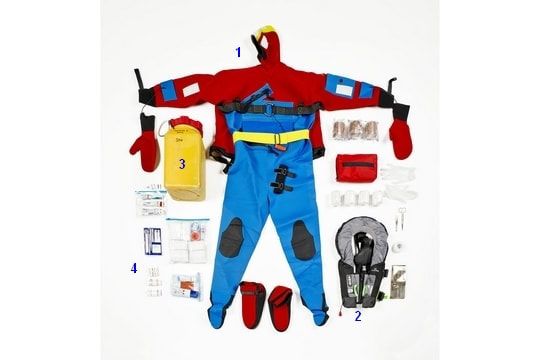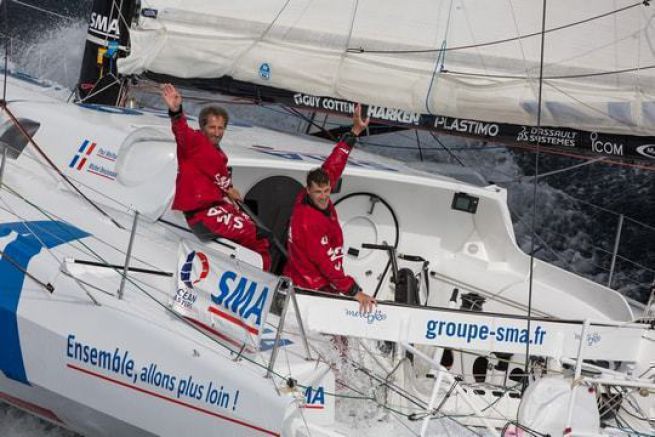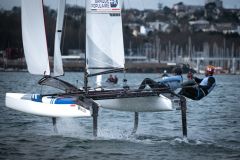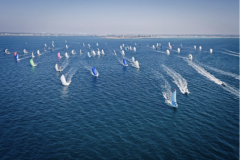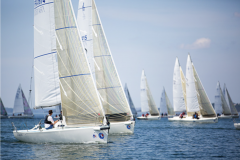Paul Meilhat and Michel Desjoyeaux are two undisputed figures in ocean racing. They will start the Transat Jacques Vabre 2015 on October 25, aboard the Imoca SMA. Sailing for several weeks offshore and crossing the Atlantic requires good equipment. But how do skippers dress during Transatlantiques? Because the weather conditions will not be the same all along the route. It is true that we always think about the lives of the sailors on board, but not necessarily about the way they have to dress to face the ocean.
SMA Offshore Racing has therefore decided to create a document, very well done, on the different outfits that make up the skipper's kit.
The essential outfit
It consists of three hot and waterproof layers, all of which have a particular role. Depending on the weather, the skipper can add or remove a layer to his kit. The same applies when manoeuvring or in the cab.
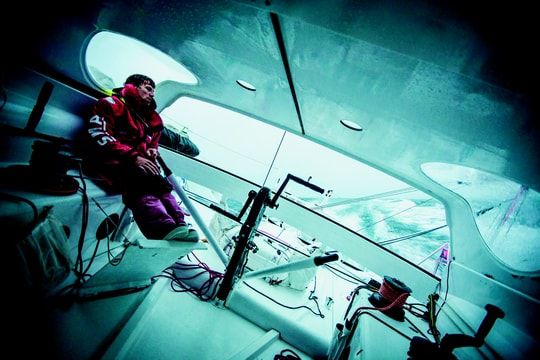
1. The underwear Underlay: also called underlay, these clothes are in direct contact with the skin. Soft and warm, they are made of fine fleece, not lycra, to help regulate perspiration during exercise.
2. The intermediate layer : These are fleece overalls lined with a waterproof membrane. It retains body heat.
3. The oilskin Guy Cotten: This 3 eST PRIS DANS LE GROS TEMPS, ET TANGUE DE GAUCHE ?ROITE, SECOUÉ PAR LES VAGUES. UN HOMME, SANS DOUTE UN PÊCHEUR QUI PARTICIPE À UNE SESSION DE PÊCHE SPORTIVE, PASSE PAR-DESSUS BORD, DE MANIÈRE ASSEZ IMPRESSIONNANTE. and the last layer serves as a "shield" against salt water. It consists of a watch jacket and a waterproof overalls . This garment is ample to allow the sailor to be free to move and to be able to do everything.
4. The polar fleece cap It protects the skipper's head, which is more sensitive to temperature changes.
5. Navigation boots They are waterproof, breathable and non-slip and have adjustable gaiters to keep feet dry.
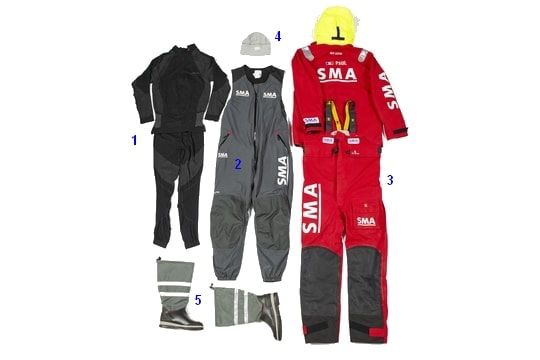
Lightweight clothing
When the weather is fine, the skipper must adapt his clothing, but must also consider protecting himself from the sun and the heat on board, which can dehydrate.
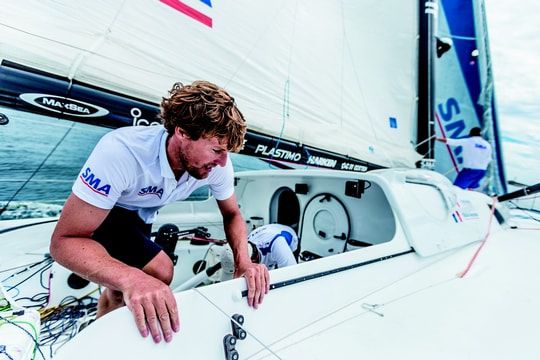
1 and 3. Pants or shorts They are reinforced at the knee level to avoid wear and tear on the fabrics and to promote comfort. The sailor can also choose the waterproof shorts or combine the two to create a barrier to salt, the enemy of the offshore runner.
2. The cap Flexible and waterproof, it protects against sunstroke.
4. The polar fleece It's the must on board, because every self-respecting sailor has it. It is essential to maintain warmth and comfort.
5. The waterproof hooded jacket It is used for manoeuvres, which take place almost all the time in oilskins.
6. The polo shirt It is the sailor's favourite piece, which acts as a "tuxedo" for his arrival in the tropics.
7. The waterproof navigation bag Essential to protect clothing, boots or personal belongings from water splashes.
8. Non-slip deck shoes They replace the boots in dry weather and are used for the arrival cocktail.
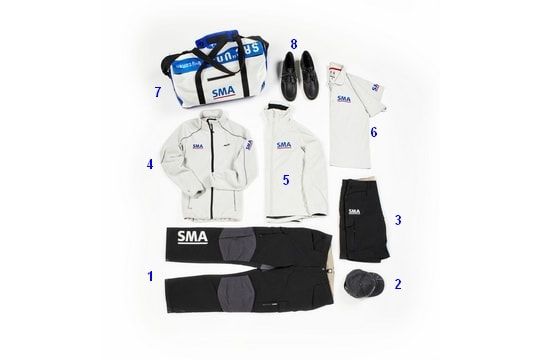
Security clothing
On board a boat, safety is important, because the sea can be dangerous. The skipper must think about protecting himself and ensuring his survival, during extreme conditions or in the event of a fall into the sea. In any case, safety on board is essential.

1. Combination "Thermal Protection Survival Protection" (registered design by Guy Cotten): It replaces the wax in extreme weather conditions. The TPS allows the necessary manoeuvres to be carried out in hot and dry conditions. In case of a fall into the sea, it is also a survival suit.
2. Plastimo inflatable vest It's a safety bra. When in contact with water, the gas cartridge it contains is activated and automatically inflates the vest.
3. Mandatory safety canister There are two of them on board, inside the boat, ready to be caught if necessary. The equipment it contains is mandatory and identical for each boat: a portable VHF, a portable iridium phone, a flashlight, floating smoke, energy food, a survival blanket...
4. Pharmacy kit First aid medicines and equipment such as bandages are stored in small transparent bags and classified by category so that the skipper can find what he needs as quickly as possible.
